How To Soften The Transition On Images In Photoshop
Skin is i of the most crucial aspects of retouching a portrait to create the perfect look. Hair, eyes, and lips are all disquisitional, but it's the skin that makes the image stand out.
1 mode to make your subjects' peel announced flawless is to achieve a natural, soft texture. In this tutorial, we'll teach you lot to soften pare in Photoshop using different methods.
Kickoff with Removing Blemishes
We'll examine these methods using this photo from one of our writers here at Cole's Classroom. Our model has lovely skin, but we might decide we want a more loftier-end stop to the image.

An initial skin cleanup is optional, but it tin can make your overall results wait even amend. Then if you want to achieve the look of smooth pare in Photoshop, starting time become rid of any blemishes your bailiwick may take.
Step 1: Open the Image in Photoshop
In Photoshop, click File > Open. You lot can also.employ keyboard shortcuts, Ctrl+O or Command+O on Mac. And then, select the photo you want and click the Open up push button.
Step 2: Create a New Layer
Brand a copy of the original photo (Background Layer) in Photoshop. To do this, press and concord the Alt key for Windows and Option key for Mac. Then, click on the Background Layer. Adjacent, elevate the Groundwork Layer onto the New Layers icon, which is at the lesser of the Layers Panel in Photoshop.
After y'all practice this, a dialog box will open up. Yous'll encounter a section where you tin can proper noun the layer. In this case, you'll desire to proper name the layer "Spot Healing." Then, click OK.
At present, y'all should meet two different layers in Photoshop. The copy of the paradigm should appear above the original layer. The copy layer should be named "Spot Healing." The original layer should exist listed equally "Background."
This allows you to do the initial blemish removal on carve up layers and non all in one, which makes for a smoother, more than realistic look.
Stride three: Detect the Healing Brush
Locate the Toolbar and look for the Spot Healing Brush. In the Options Bar, gear up the Type to Content-Aware. This feature is helpful because it allows yous to polish pare in Photoshop by removing imperfections and replacing them with softer textures from the surrounding areas of your subject'southward face.
So one time you accept the Healing Brush selected, click on any rough textures, blemishes, or other imperfections to remove them. If you make the castor size a flake larger than the photo, you should achieve the best results.
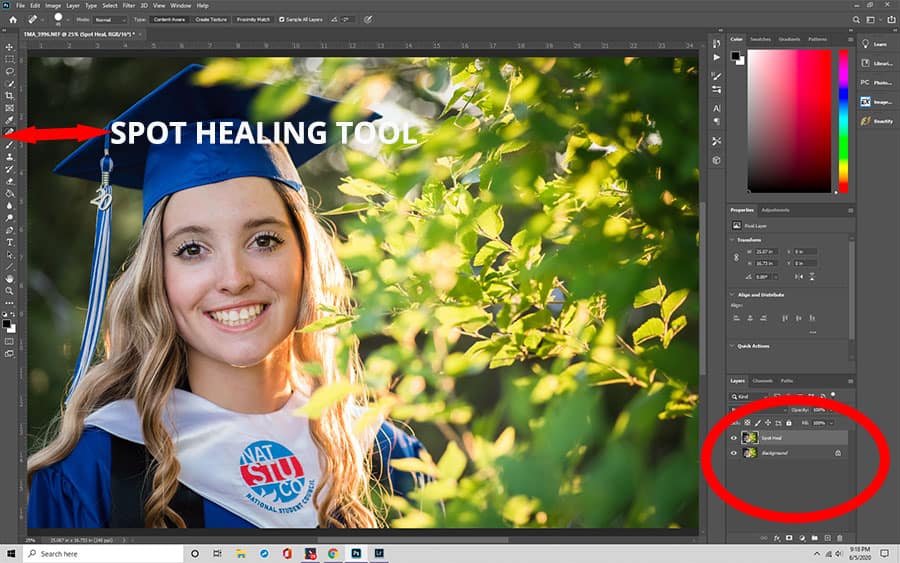
To make your brush larger, hit the right bracket key ( ] ). For a smaller castor, press the opposite fundamental ( [ ). If you don't see whatsoever noticeable results, press Ctrl+Z on Windows or Command+Z on Mac to undo your work. So, continue resizing your castor and clicking the unwanted blemishes until you attain the desired results.
Pace 4: Copy the Spot Healing Layer
At present that you lot've removed the blemishes from your field of study's face, it's time to create a softer texture. But first, you demand to create a divide layer. To copy the "Spot Healing" layer, press and hold the Alt (Option) cardinal and click on the "Spot Healing" Layer. So, drag information technology downwardly to the New Layer icon.
When the Duplicate Layer dialog box opens, proper noun it "Smooth Peel." Then, click OK. After this, you should have iii different layers: the original photo (Background) layer, the "Spot Healing" Layer, and the "Smooth Skin" layer.
The "Smooth Skin" layer should announced to a higher place the "Spot Healing" one. The "Spot Healing" layer should appear in a higher place the original photo (Background) layer.
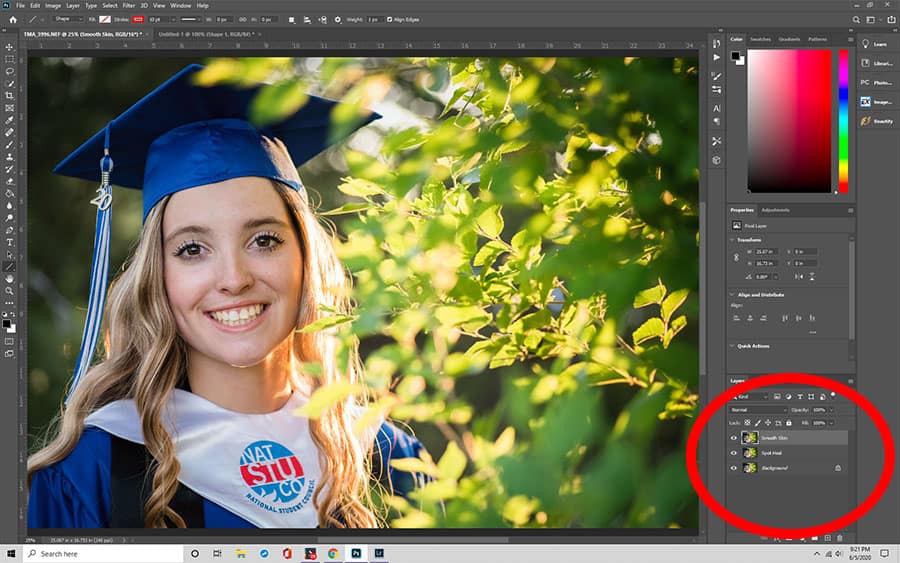
Softening Pare With Photoshop's High Laissez passer Filter
Photoshop's Loftier Pass filter is an excellent tool considering it smoothes skin in portraits. Information technology works so well considering it applies a smoothing outcome to an unabridged photo. And so, past using a layer mask, you tin can uncover certain parts of a photo you want to stay precipitous, such equally the pilus, oral fissure, and eyes.
Below are pace-by-stride instructions to attain a pare smoothing effect in Photoshop using this method. We'll use the aforementioned image equally above.
Stride 1: Copy the Layer
If yous did the initial cleanup, then y'all can skip this pace. But if not, just copy the original layer and give it a proper noun. You lot can telephone call information technology "Smoother Skin" layer, whatever is easier for you to identify.
Step 2: Select the Filter
Next, select Image > Adjustments > Invert. The photograph should announced softer and blurred out, except for the optics and rima oris.
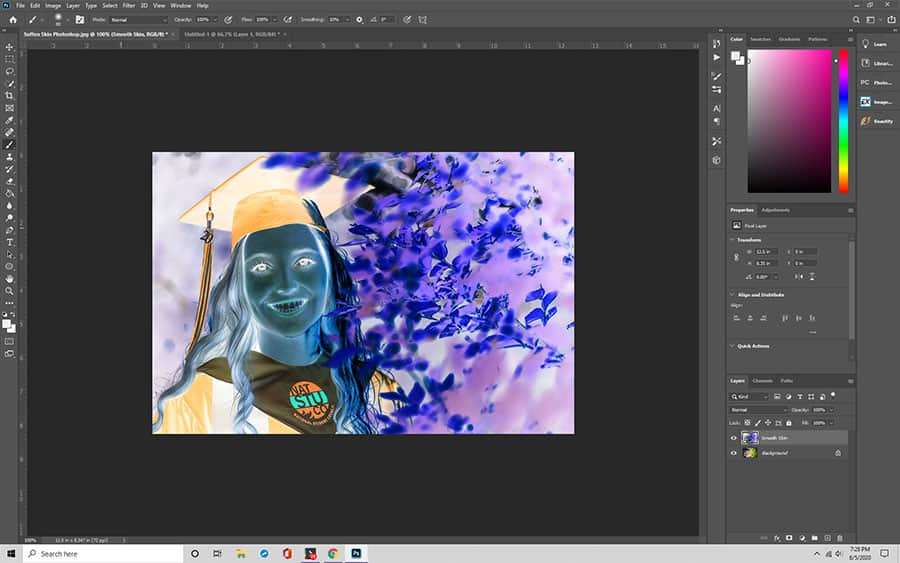
And then, in the Layers Console, set the blending way of this layer to bright light.
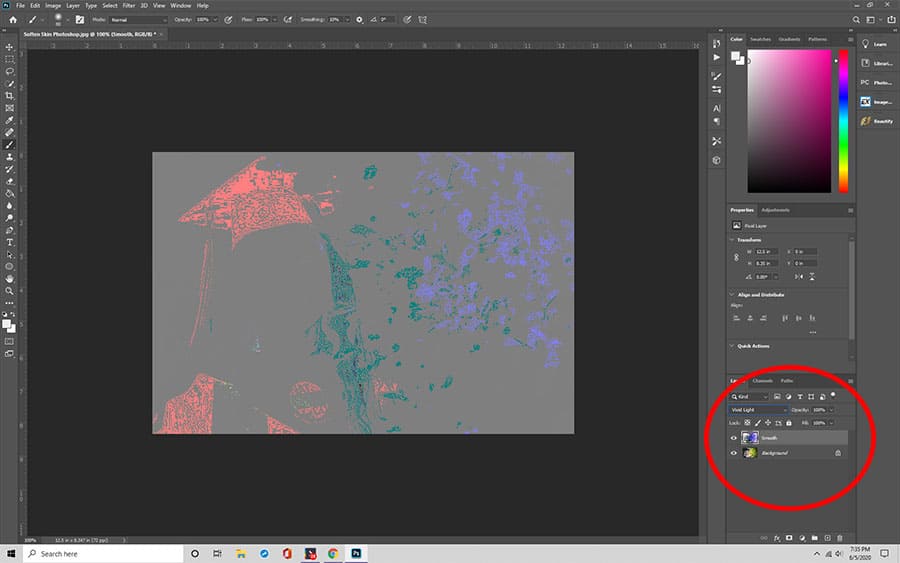
Nether the Menu Bar, go to Filter > Other > High Pass. A dialog box will open, which displays the Radius value, which controls the thickness of the edge highlighting. The lower the Radius value, the less it will highlight the details in an image, and vice versa.
So if your subject field is further back in the photo, and then you'll need a lower Radius value in lodge for it to capture every detail. Simply if your subject is closer, you'll want to fix it to a higher Radius. A Radius of 24 pixels works well for well-nigh portraits.
Once y'all've chosen the optimal Radius value for your portrait, click OK to close the dialog box. Every bit a result, your photograph will show a gray overlay.

Footstep three: Employ a Blur Filter
Using the Gaussian Blur feature in Adobe Photoshop, you can further reduce the sharpness of the photo. To use Gaussian Blur, go to the Filter menu over again. Only this time, you lot'll choose Blur > Gaussian.
After opening the dialog box, change the Radius value to 1-third of the value y'all used for the filter. For example, if you prepare the radius to eighteen pixels, then 1-third of that is 6. Therefore, you'd set the radius to 6 pixels. After you've entered the radius, click the OK push.
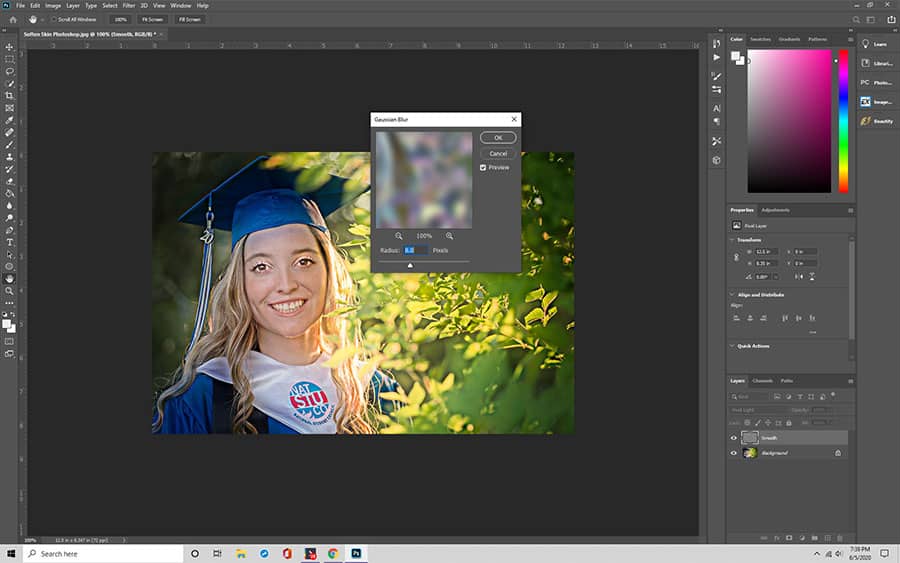
Step 4: Add together Layer Mask
Because y'all don't desire to smooth out the entire photo, y'all must add a layer mask. To practice this, hold the Alt (Option) key and click the Add Layer Mask icon in the Layers Console. Your layer mask should be blackness. And then, select the Brush tool. Choose white equally your Foreground colour.
Side by side, option a brush tool. Set the Hardness, Opacity, and Flow to whatsoever percentage that achieves the look yous're going for. Try starting with values of 50 percent for Hardness, 50 per centum for Opacity, and 100 percentage for flow. Apply the brush tool to paint over the peel to reveal the "Smoother Peel" layer.
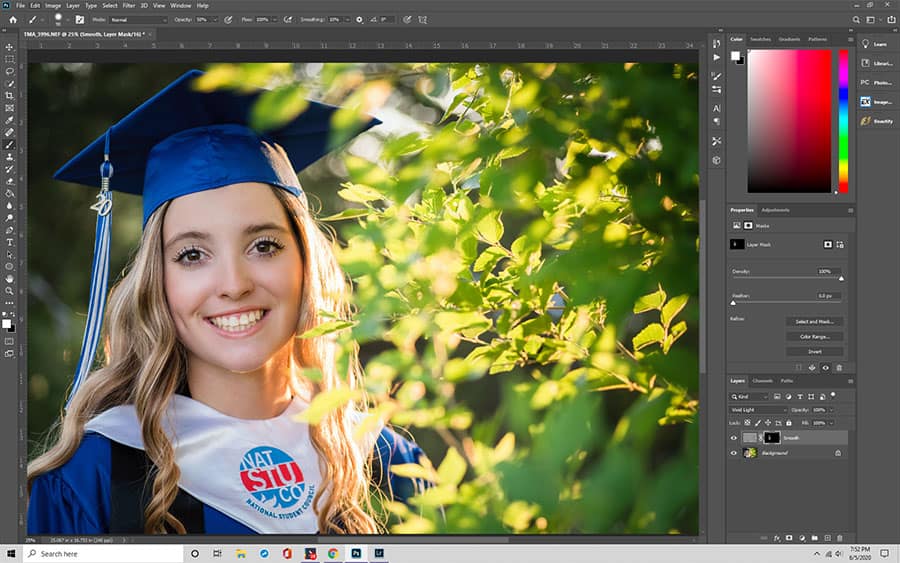
You tin reduce the opacity if you want the subject field'southward face to keep some of its original skin texture.

Softening Skin With Adobe Photoshop's Frequency Separation Feature
Some other method to create a smooth skin in Photoshop is the software's Frequency Separation feature. Each photo contains different frequencies. These frequencies decide the amount of detail a photograph has.
College frequencies in a photo include fine details. These details consist of imperfections, skin tone, fine lines, pores, and hair. Lower frequencies are related to tones, colors, low-cal areas, and shadows.
To smoothen skin in Photoshop, you lot take to split up your subject's confront from the tone and shadows in the photograph. This allows you to alter the colors, shadows, and highlights in a photo without messing upward the texture. The Frequency Separation tool allows yous to retouch your photos seamlessly.
Step 1: Open Your Image in Photoshop
After uploading your photo in Photoshop, press and concord the Alt (Selection) central to copy the Background layer. Name the duplicate "Detail & Texture," which will be the high-frequency layer. Click the eye symbol to hide this layer for now.
So, rename the Background layer to "Colour & Tone," which will human action equally the low-frequency layer. After that, right-click and select Convert to Smart Object.
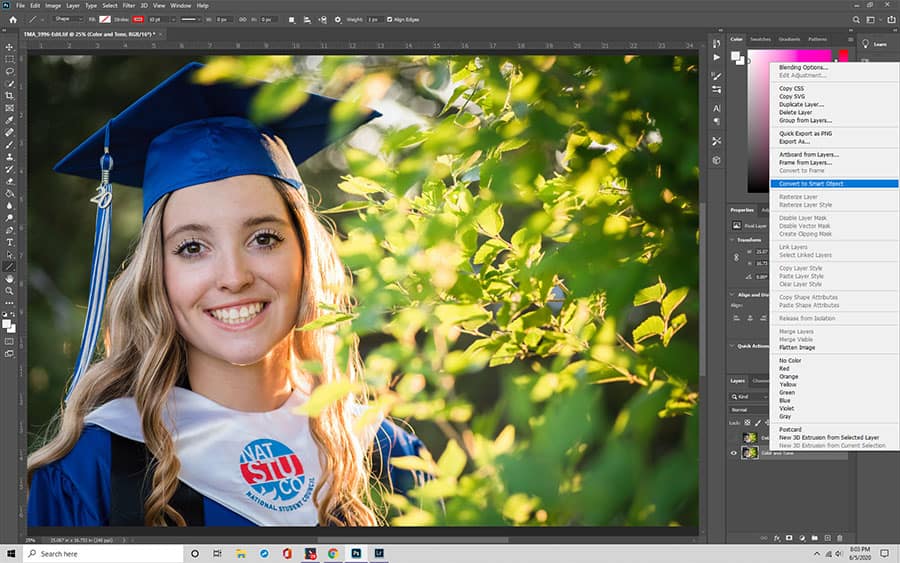
Step two: Blur the Image
Select the "Color & Tone layer. So, go to the Filter > Mistiness > Gaussian Blur. Modify the radius until you lot no longer see the skin texture. Click OK.
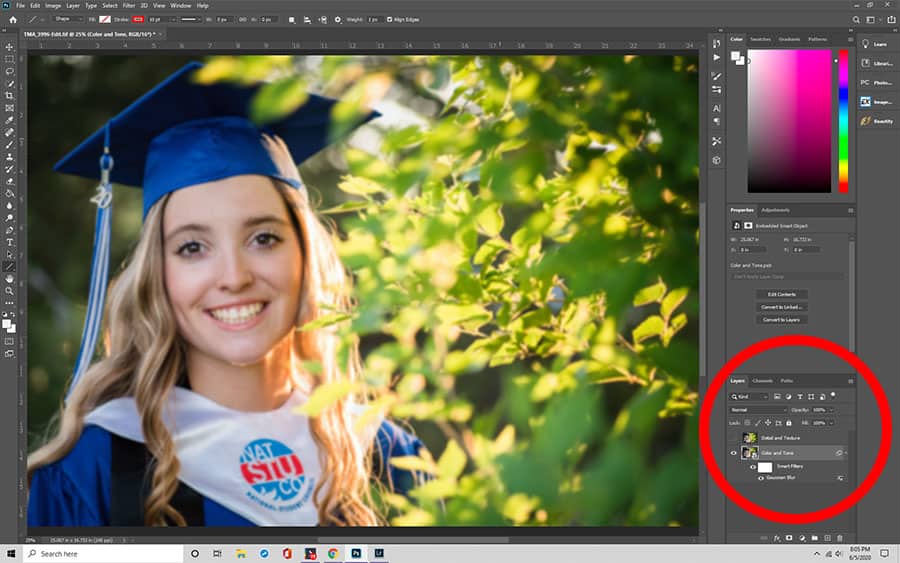
Step 3: Create a New Layer
Printing and hold Ctrl (Command) + Shift + N to create a new layer. Place it between the Detail & Texture and Color & Tone layers. Name information technology "Retouch Color & Tone." Unhide the Detail & Texture layer by clicking the eye symbol adjacent to it.
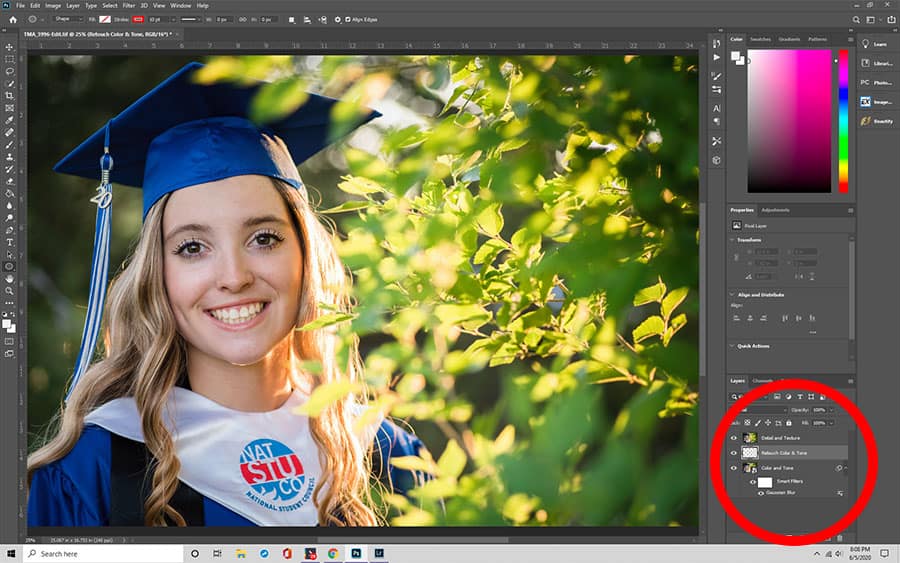
Pace four: Open up the "Apply Image" Setting
At the top Bill of fare Bar, select Image > Employ Image. In the settings, alter the layer to Color & Tone. Under Blending, select Subtract. Set the Scale to 2. Then, change the Get-go to 128. Next, click the OK button to apply the changes. After this, yous'll notice a greyness overlay.
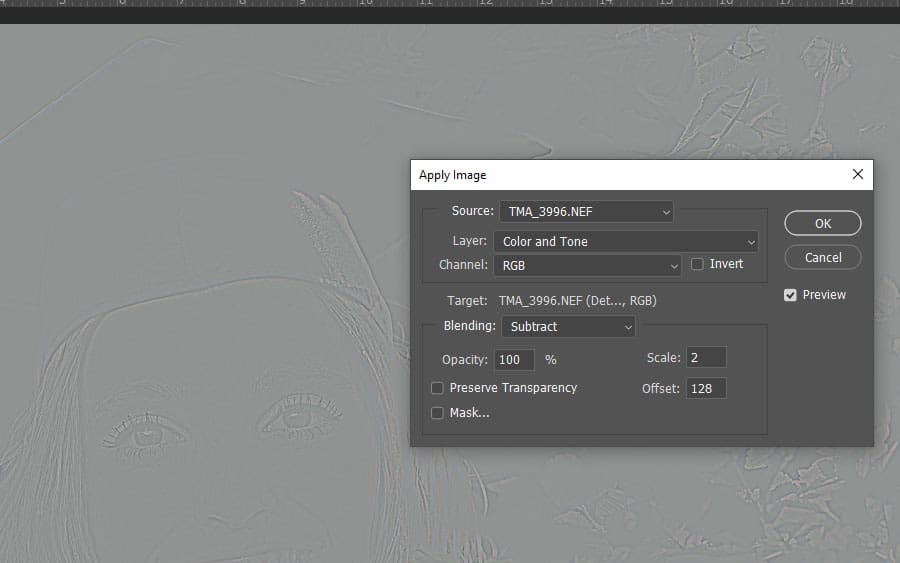
From the Layers Palette, change the Blend Mode to Linear Low-cal. Your photo should appear normal over again, just at present it's sharper.
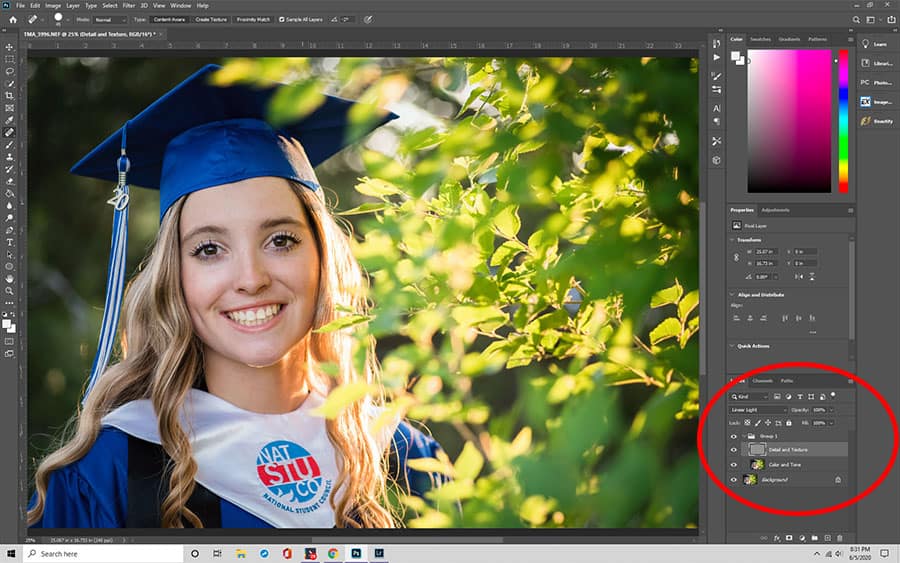
Step v: Retouch the Skin
Select the " Item & Texture " layer and use the Healing Brush tool to reduce the appearances of depression-frequency details, such as wrinkles and blotches.

Step half dozen. Polish the Skin
And then, select the "Color and Tone" layer. Add a quick mask past selecting it from the toolbar at the left.
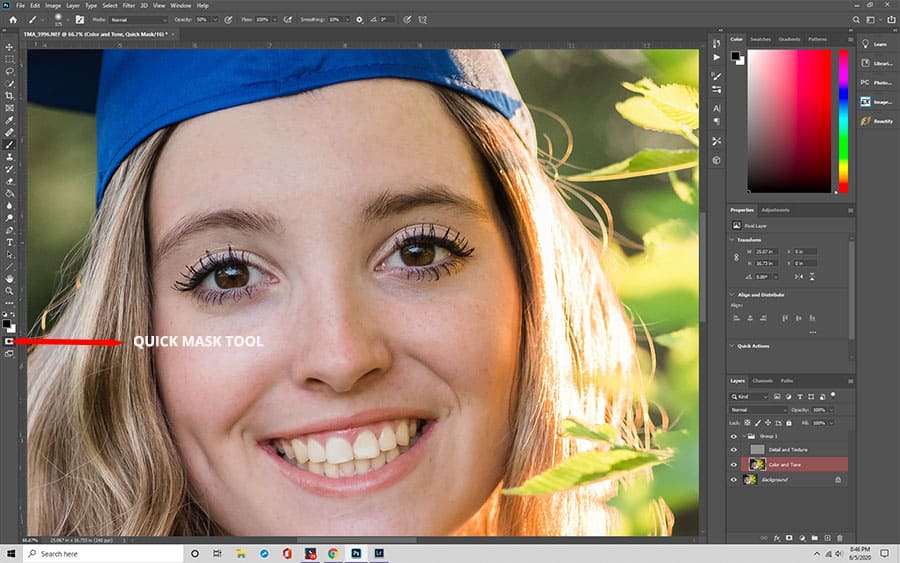
Use a soft brush on the mask to pigment over the areas where yous want to smooth the skin. Y'all'll come across the mask existence brushed on in red. Then hit "Q" to toggle between the painted mask and the selection ants marching.
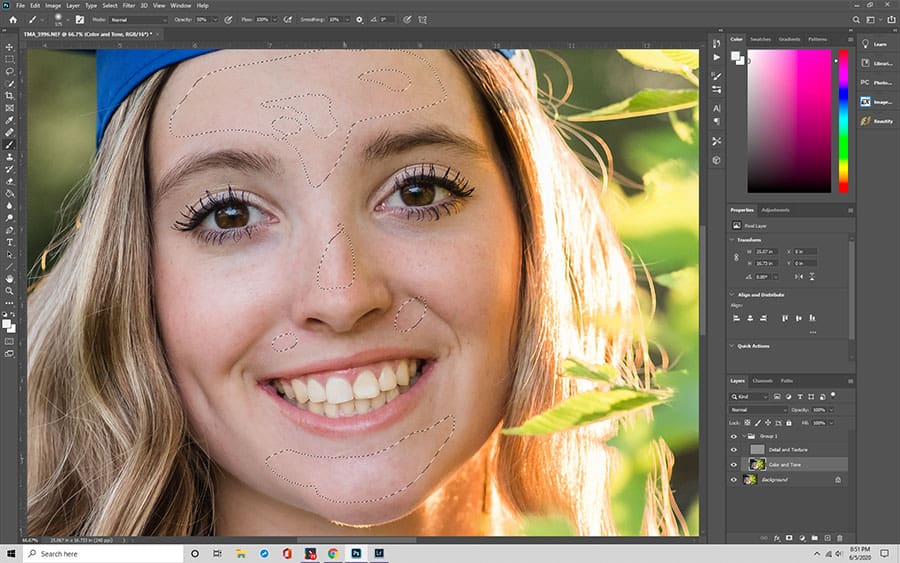
Now we want to smooth these layers out. Cull Filter > Blur >Gaussian Blur. Choose a radius where the skin looks smooth without whatsoever vignetting at the edges. Once you're satisfied with the results, Choose Command+D or Command+D to deselect the pick. You can work on smaller areas individually to apply dissimilar levels of mistiness.

Wrap Upwards
Retouching portraits in Photoshop may seem like a headache. But if you follow the steps closely, information technology should be fairly simple. For a better understanding, we suggest applying these steps to a photo as you follow forth. That way, you'll be able to accomplish an excellent issue that you can then indistinguishable in future prototype edits.
Source: https://www.colesclassroom.com/how-to-soften-skin-in-photoshop/
Posted by: halliiii1953.blogspot.com

0 Response to "How To Soften The Transition On Images In Photoshop"
Post a Comment